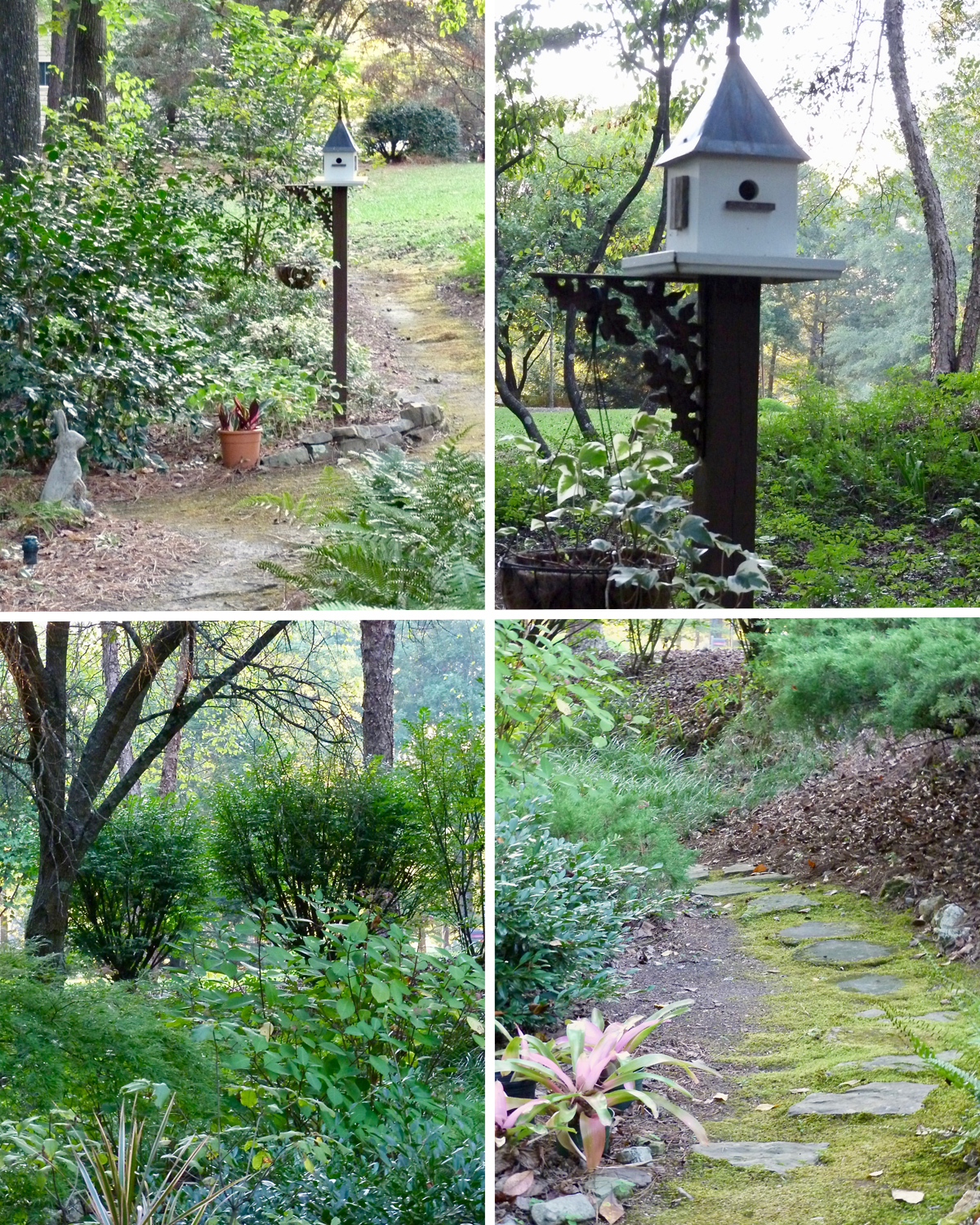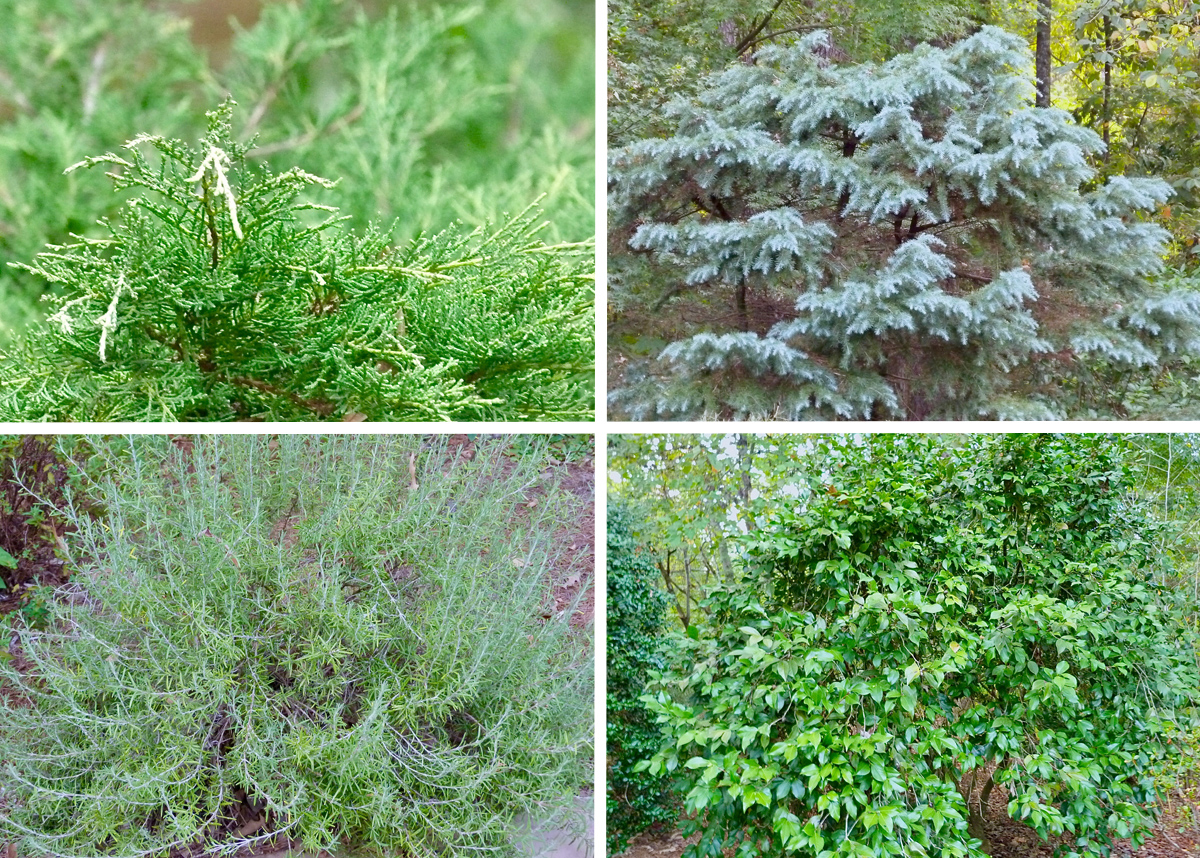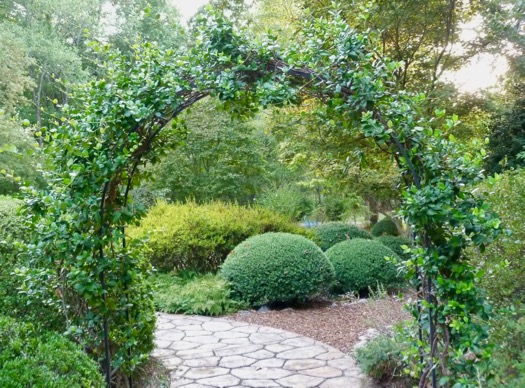Hanging in There, not Dead Yet!
 Thursday, October 3, 2019 at 3:45PM
Thursday, October 3, 2019 at 3:45PM Drought and burning temperatures persist. Here is what my front garden looks like now: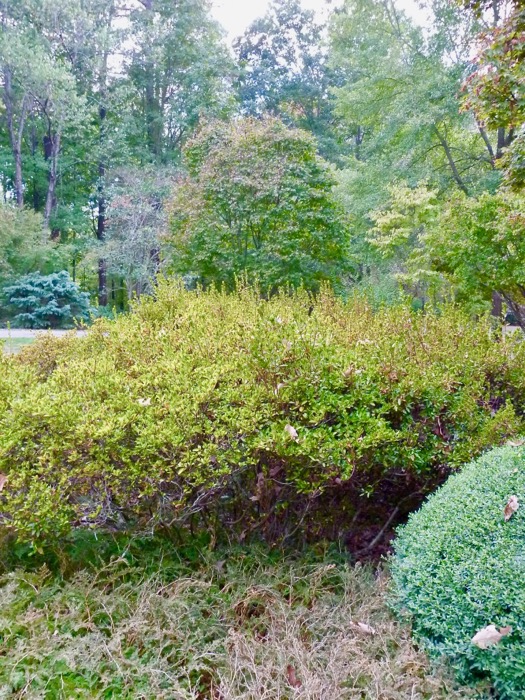
The arborvitae ferns (in the foreground) are turning brown in the triple digit heat. The azaleas above them are turning yellow, definitely not a good sign. The good news is that neither the ferns nor the azaleas are dead yet, and the temps are predicted to be 15-20 degrees cooler next week. We may even get some rain this weekend. So if we can hang in there a little longer, things may get better.
The 50% chance of rain makes me nervous. I would like better odds. Too many times black clouds have hoodwinked us with unfulfilled promises. I took these photos just last week, but the deceptively dark clouds passed over without releasing a drop:

I usually can find beauty in the garden, no matter what. I can appreciate the dead stuff, but it would be easier if the following shots were taken in November or December: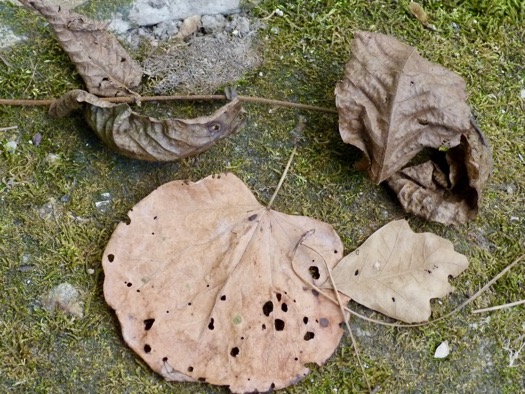 Nature created this collage of prematurely dead leaves.
Nature created this collage of prematurely dead leaves.
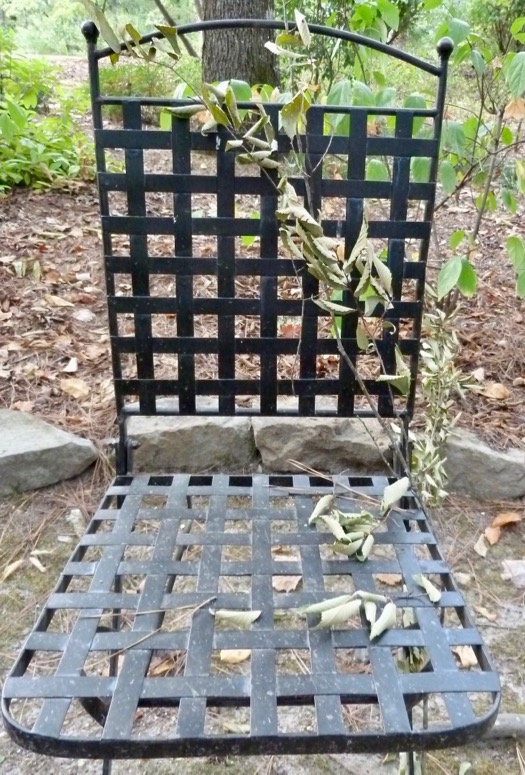 A dead branch fell on a chair in my woodland garden, creating an accidental composition that appealed even to my drought weary eyes.
A dead branch fell on a chair in my woodland garden, creating an accidental composition that appealed even to my drought weary eyes.
Leftovers from a squirrel banquet made me genuinely smile. Someone really enjoyed those pinecones!

Despite the premature aging in the garden, there are spots of color. Autumn crocus is a delight. I put these in only a couple weeks ago, and already Colchicum 'The Giant' is blooming. These were an experiment, and I plan to plant more: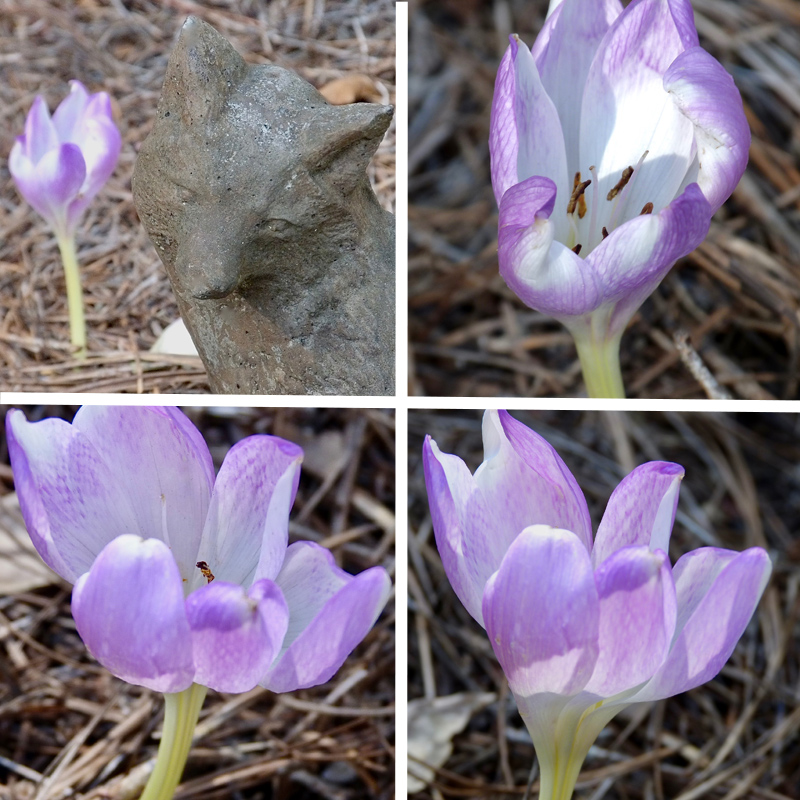
Spider lilies (Hymenocallis) appear like magic every year, supplying bright color for very little maintenance:
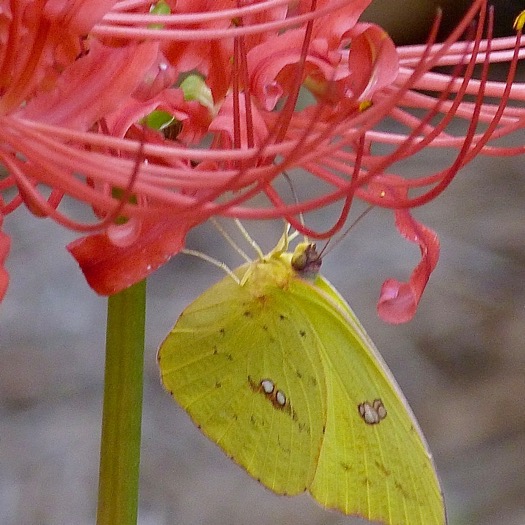

Eupatorium coelestinum, also called hardy ageratum and blue mistflower, are favorite wildflowers. They will reseed themselves around but are easy to pull, and I do not consider them invasive:
Somewhere in my closet are long-sleeved shirts. I am looking forward to digging them out. I may even sit a pumpkin or two outside to celebrate the new season, once the temps drop enough so that they don't cook in the sunshine.
 Colchicum,
Colchicum,  drought,
drought,  fall,
fall,  spider lily,
spider lily,  wild ageratum in
wild ageratum in  clouds and sky,
clouds and sky,  fall,
fall,  weather
weather 
